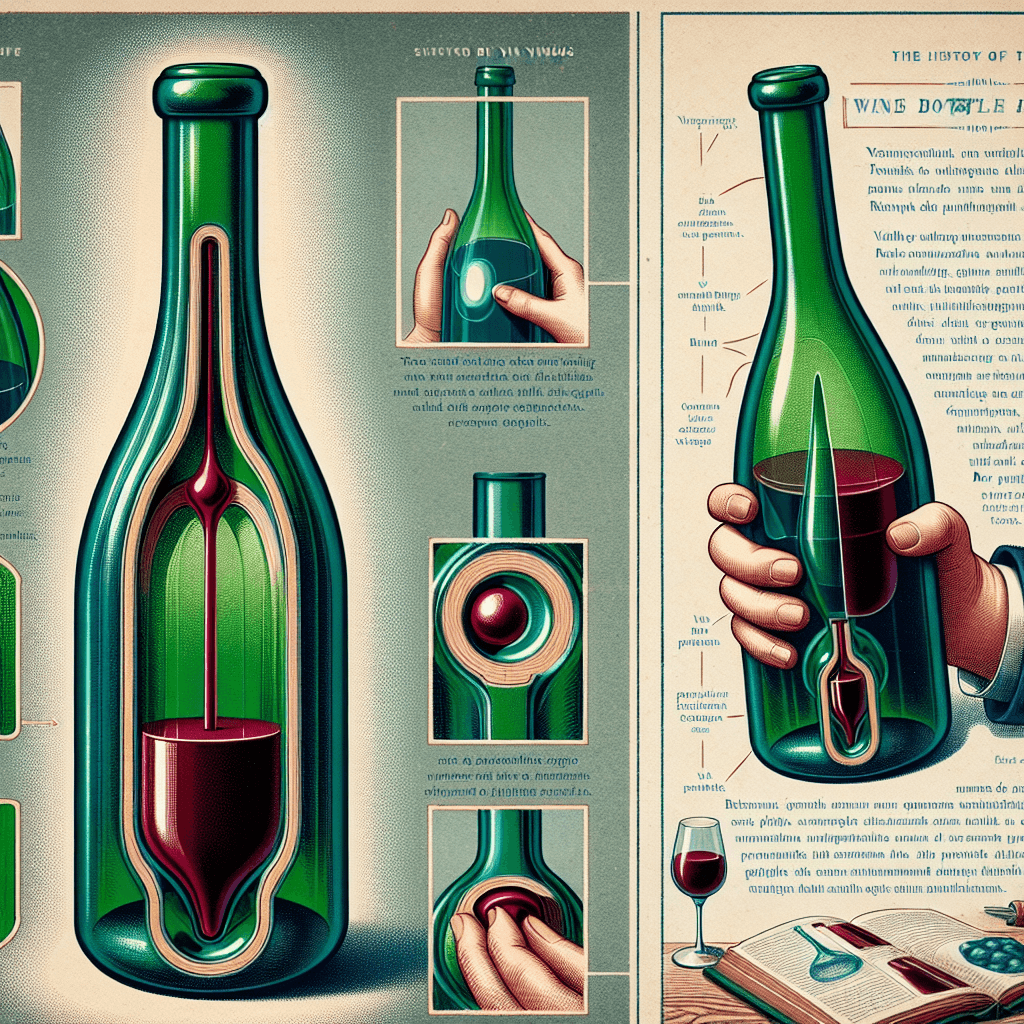Why do wine bottles have a deep dent in the bottom
That deep dimple in your wine bottle isn't a fancy grip for the sommelier, but a brilliant piece of engineering with a surprisingly explosive history.


Too Long; Didn't Read
TLDR: The dent, called a punt, is a historical feature from old glassblowing methods. Today, it adds strength for sparkling wines, helps collect sediment, and provides a thumb grip for pouring.
The Mystery of the Punt: Why Do Wine Bottles Have a Deep Dent in the Bottom?
Have you ever held a bottle of wine, run your thumb over the deep indentation in its base, and wondered why it’s there? You’re not alone. This feature, known as a "punt" or "kick-up," is one of the most debated and misunderstood elements of wine packaging. Is it a secret sign of quality? A clever marketing trick? Or does it serve a practical purpose? The truth is a fascinating blend of historical necessity, clever engineering, and modern tradition. This post will delve into the real reasons why wine bottles have a deep dent in the bottom, separating long-standing facts from popular fiction.
The Punt: A Remnant of a Bygone Era
The most historically accurate reason for the punt dates back to the days when every glass bottle was made by hand. Glassblowers used a tool called a pontil rod to hold the molten bottle while they shaped it. When the pontil was broken off, it left a sharp, rough scar of glass—known as a "pontil mark"—on the bottom.
To solve this, the glassblower would push the scar upward into the bottle, creating the indentation we now call the punt. This simple and ingenious solution achieved two things:
- It prevented the sharp edge from scratching tables and other surfaces.
- It created a stable, even base for the bottle to stand upright without wobbling.
While modern, machine-made bottles don’t have pontil marks, the punt has remained a traditional feature of wine bottle design.
Modern Practicality: More Than Just Tradition
Although its original purpose is now obsolete, the punt continues to serve several important functions in the world of modern wine, especially for sparkling varieties.
Structural Integrity for Sparkling Wines
This is perhaps the most critical modern role of the punt. Wines like Champagne and Prosecco are bottled under immense pressure—sometimes up to 90 pounds per square inch (psi), which is three times the pressure in a typical car tire. A flat-bottomed bottle would have a weak point in the center, making it vulnerable to shattering. The arched shape of the punt distributes this pressure evenly across the base and up the sides of the bottle, significantly increasing its strength and preventing dangerous explosions.
Aiding the Winemaking Process
For traditional method sparkling wines, the punt plays a key role in the "riddling" process. During aging, bottles are placed neck-down in a riddling rack and periodically turned to encourage the dead yeast cells, or lees, to collect in the neck. The punt allows the bottles to be stacked securely in this position and helps the sediment gather in a neat, compact circle around the base of the indentation, making it easier to remove during disgorgement.
Ease of Handling and Pouring
Sommeliers and wine enthusiasts often use the punt for a more elegant and controlled pour. Placing a thumb in the punt while supporting the bottle with your fingers provides a secure grip, making it easier to handle a heavy bottle and pour with precision.
Debunking Common Myths About the Punt
Over the years, several myths have emerged to explain the punt’s existence. Let’s clear a few of them up:
- Myth: A deeper punt means a better-quality wine. While many premium producers use bottles with deep punts for aesthetic and traditional reasons, it is not a reliable indicator of quality. Many excellent wines come in bottles with shallow punts or none at all. This is more of a marketing choice than a quality standard.
- Myth: The punt makes the bottle look like it holds more wine. A deep punt does displace volume, meaning the bottle must be larger to hold the standard 750ml. While this might create a grander impression on the shelf, it’s a side effect of the design, not its primary purpose.
- Myth: It helps chill the wine faster. The idea is that the increased surface area inside the bottle helps the wine cool more quickly. While technically plausible, the effect is so minimal that it’s considered negligible and is not a factor in the bottle’s design.
A Legacy in Glass
So, why do wine bottles have a deep dent in the bottom? What began as a practical solution for early glassblowers has evolved into a feature celebrated for its structural strength, role in the winemaking process, and nod to tradition. It’s a perfect example of how historical craftsmanship continues to influence modern design. The next time you pick up a bottle of wine, take a moment to appreciate the punt—not as a gimmick, but as a silent testament to the centuries of history, physics, and artistry captured in the glass.
More Articles

Why do movie punches sound so much crunchier and louder than real ones?
That sickening, bone-crunching punch you hear in the movies is a lie, and the secret ingredient is probably sitting in your refrigerator right now.

What makes a beer bottle suddenly foam over just from a light tap on top?
It’s not magic, it’s a shockwave; discover the explosive physics that turns a gentle tap on your beer bottle into an instant foamy geyser.

Why do police officers touch the back of a car during a traffic stop?
It’s not a random habit; that simple touch is a calculated, old-school tactic designed to leave a crucial and potentially life-saving piece of evidence behind.